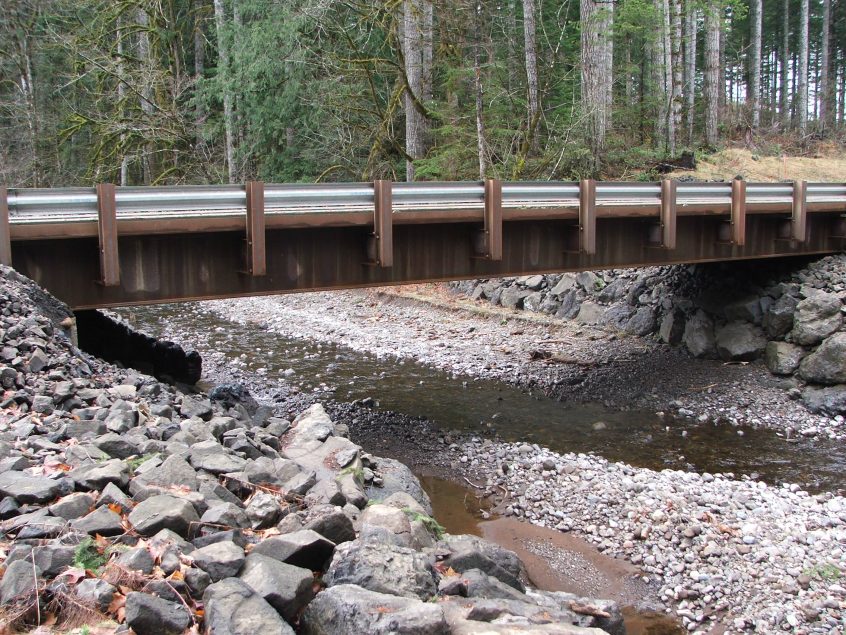Forest landowners are the state leader in clearing fish passage barriers in Washington over the past two decades. Since 1999, with the passage of the historic Forests & Fish Law, state officials estimate that 6,000 barriers have been removed, and about 6,000 miles of habitat have been opened up, with forest landowners responsible for up to 75 percent of the work.
One such landowner, Inland Empire Paper Co. of Spokane, was just honored by the Washington Department of Natural Resources for its work in clearing fish passage barriers.
In 2006, (Paul) Buckland, forest manager for the Inland Empire Paper Co., and other employees spent a day replacing a too-small culvert crossing under a road on Mt. Spokane. The 3-foot culvert had become clogged with debris. Fish, hoping to migrate downstream were unable to pass.
So they diverted the stream temporarily, removed the culvert and replaced it instead with a large concrete bridge raised on pillars above the stream.
That allowed the stream to flow naturally and gave fish a way down.
On Friday, Buckland stood on that very bridge and accepted an award from the Washington State Department of Natural Resources. For the past 15 years, IEP has methodically evaluated and overhauled much of its road infrastructure, said Ken McNamee, the northeast regional manager for the Department of Natural Resources.
“This is just another shining example of the commitment between public agencies and large industrial land owners,” McNamee said.
Inland Empire Paper did its work as part of a Road Maintenance Abandonment Plan (RMAP), covering the company’s 60,000 acres of forestland.
A decade and a half later, the project is complete.
IEP removed 67 fish barriers, opening up 38 miles of habitat. Eighty-four miles of road were renovated or removed and 18 culverts were removed or enlarged to allow easier fish access.
IEP paid for all of the work, Buckland said. Although he wouldn’t give an exact figure, he said each bridge cost between $30,000 and $50,000.
At a small ceremony on Friday, McNamee and Buckland said the effort is an example of how cooperation and partnership between private industry and regulatory agencies can lead to positive results for all.
“It’s not easy being a regulatory agency,” McNamee said. “It’s not easy being a landowner.”
The improvements will benefit the entire downstream watershed, McNamee and Buckland said. Cleaner water. Healthier fish. But, the impact goes beyond that.
“It’s not just fish,” Buckland said. “It’s fish, people, businesses. It’s the whole ball of wax.”
